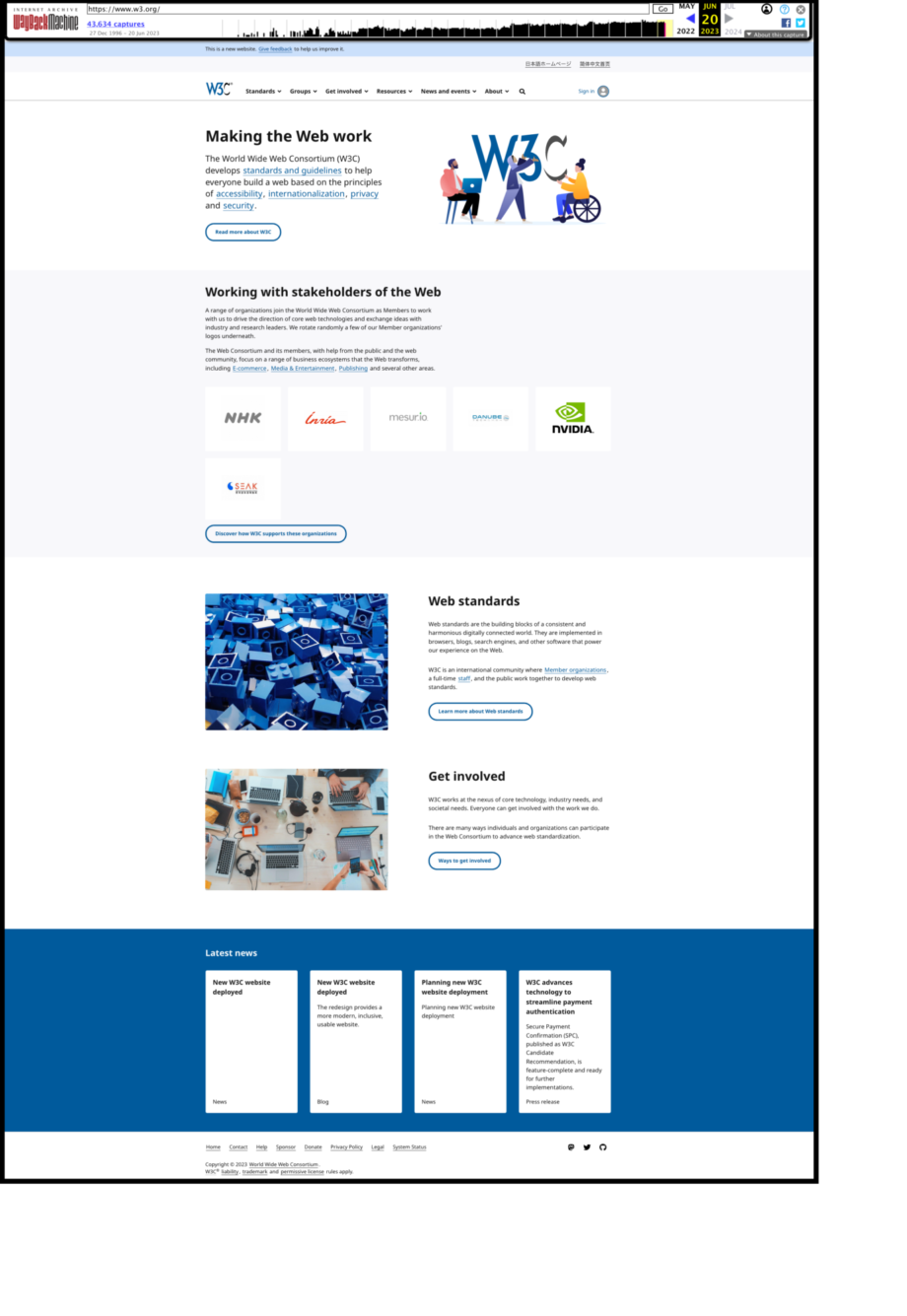Introduction
As of 20 June 2023, the W3C website is in its 5th design. Below is an annotated history of how the W3C website designs evolved since it launched in 1994. Our thanks to the WayBack Machine which has saved regular snapshots of this website since December 27, 1996.
Feedback
If you have feedback on the W3C website, please submit each comment as GitHub issues. (If you are not able to use GitHub, please email public-website-redesign@w3.org, a publicly archived mailing list.)
First design (1994-1997)
The first design of the W3C homepage was probably more than an index of W3C Discussions listing three main mailing lists, with barely any style. We need to find screenshots of back then and replace when we do.
-
1996-12-27
The earliest capture of the initial W3C website design on archive.org shows that we were using the green-red-blue W3C icon, discontinued since then.
Browse this version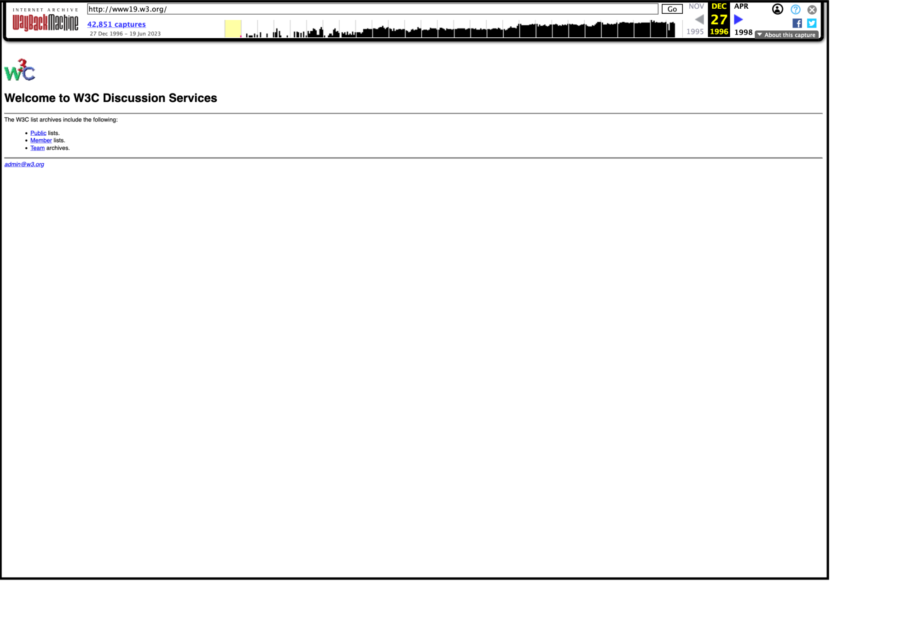
-
1997-04-12
This change introduced the W3C icon with "W3C blue" for the "W3" portion of the logo. The signature points to a "Webmaster" web page instead of directing to an email.
Browse this version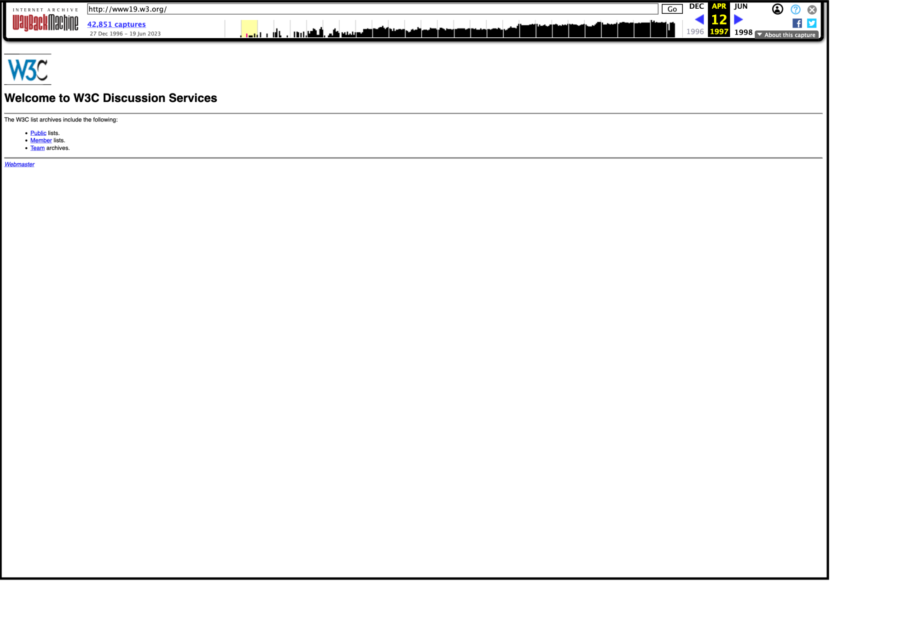
Second design (1997-2000)
The first actual design of the W3C website introduced two columns and used the full version of the W3C logo. In the third year of operations of the World Wide Web Consortium, the site needed to expose a lot more information.
-
1997-12-10
The early design was all white and quite rudimentary, using a wide main column on the left and a narrow right-hand side column to expose news and more of the pages on the site.
Browse this version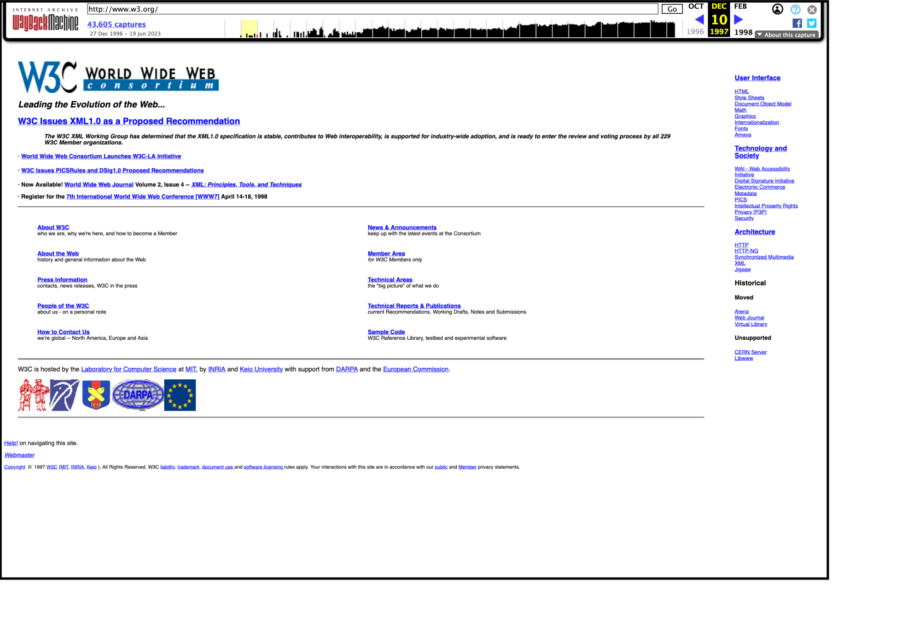
-
1999-04-29
The main change was the addition of a search button to the homepage. We also see that the right-hand side column's content increased, giving space to the content in the main section.
Browse this version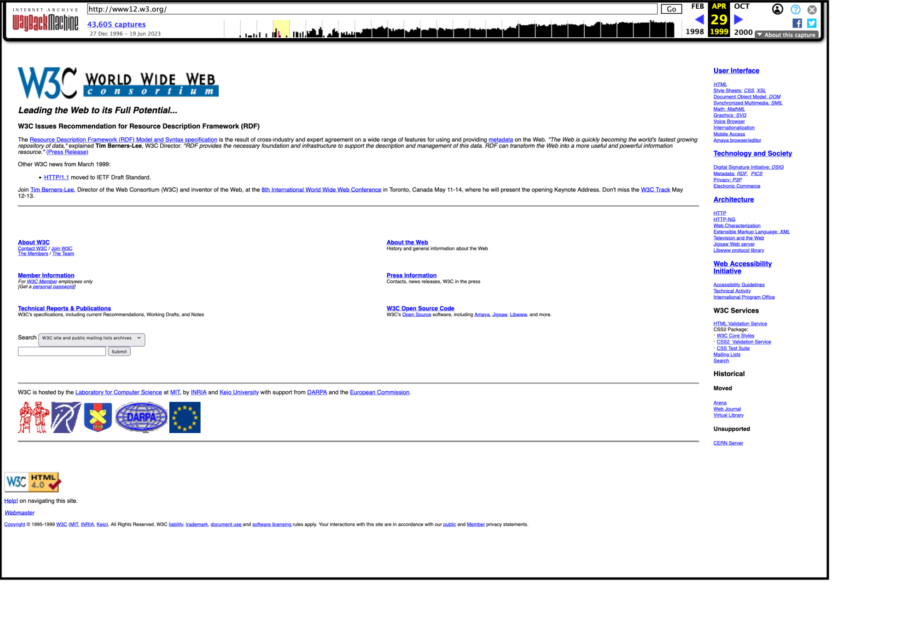
-
2000-08-15
This version introduced a pale yellow background for the right-hand side column. We see that the focus of the main section is on the news and that some categorization and sorting has been done on the side.
Browse this version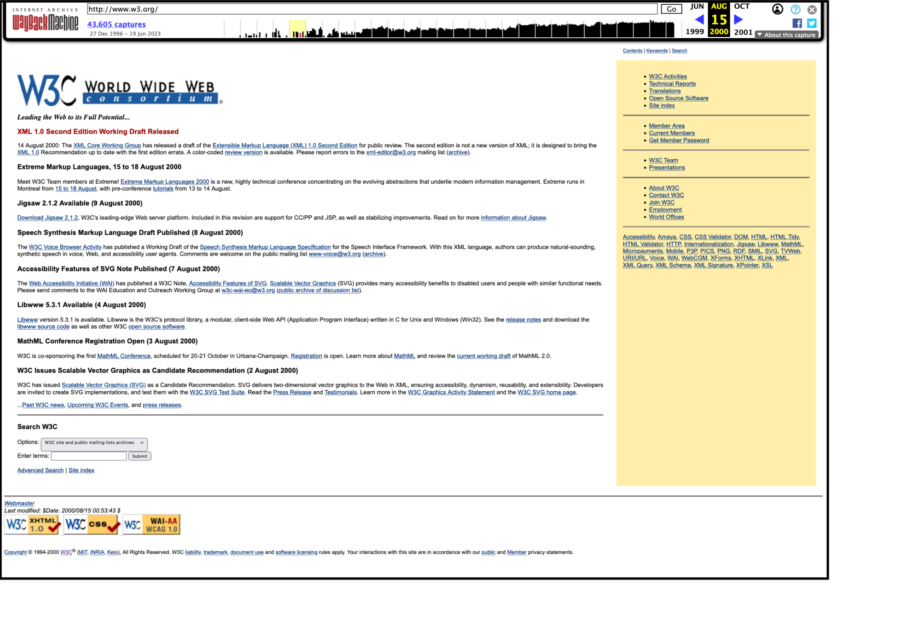
Third design (2000-2009)
The late 2000 design was a three-column one. This decade was characterized by an increasing amount of content on the site and its home page, leading gradually to a need to rethink the information architecture.
-
2000-12-15
This version introduced an additional narrow column on the left-hand side, to host an alphabetical list of the technologies under development. The column on the right was improved with section headers. And the main column makes use of visual elements such as arrow heads and a colored title to give emphasis to the top news story. A main navigation menu appeared at the top and bottom.
Browse this version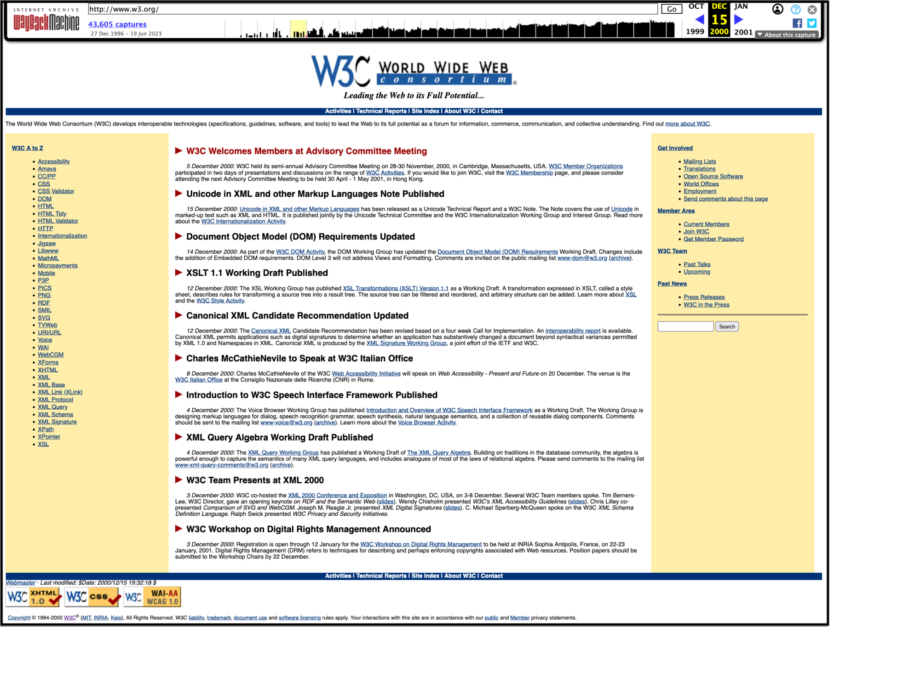
-
2002-04-02
In this minor update to the design, the search box moved from the bottom to the top of the right-hand side column and offered the ability to restrict search to the site itself, or the web at large. We also see that the left-hand side column's content increased by 30%, a sign that areas of work expanded. Finally, this version exposed a means to send comments about the site.
Browse this version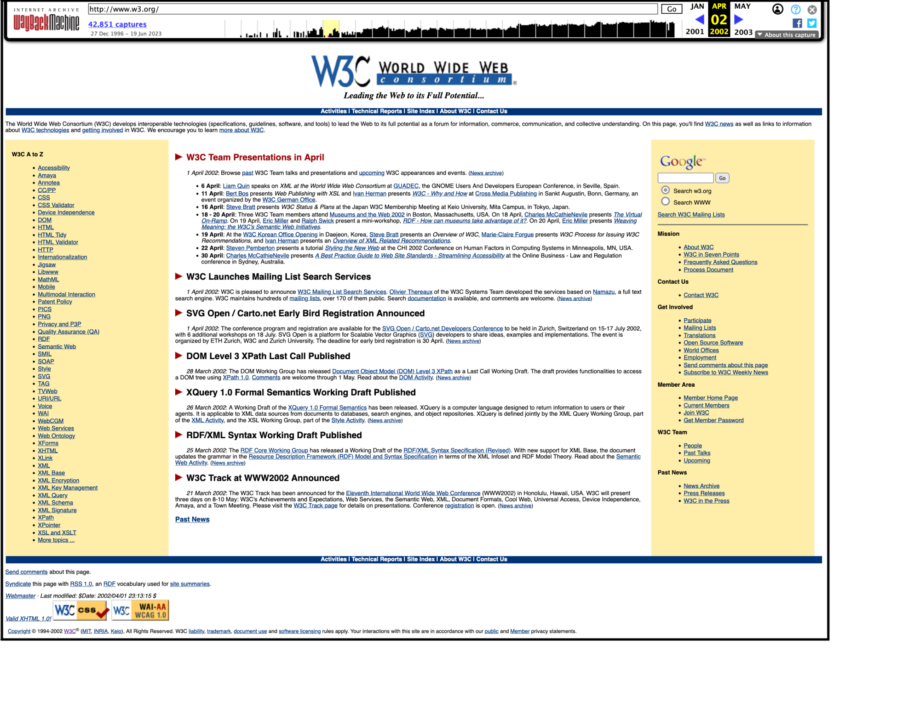
-
2002-12-20
This revision introduced different colors, removed the bottom navigation menu, and put more emphasis on introducing W3C right from the top of the page. Somehow, the content appears more compact, but is actually comparable in density.
Browse this version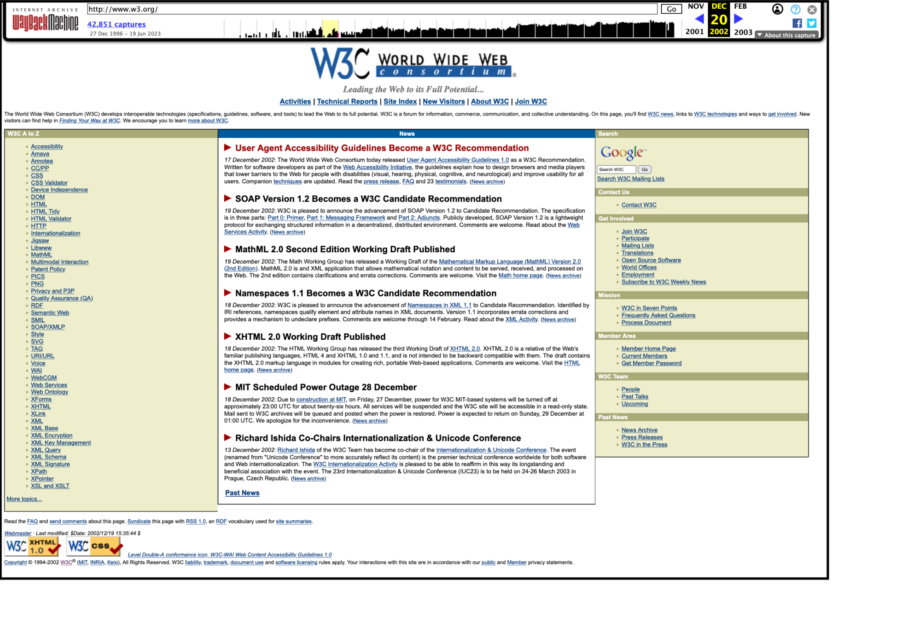
-
2004-06-16
Creation in the right-hand side column of a section to highlight W3C Members which rotated randomly at each reload of the homepage, and showed the logo of the organization and a testimonial about W3C's value to them or their business.
Browse this version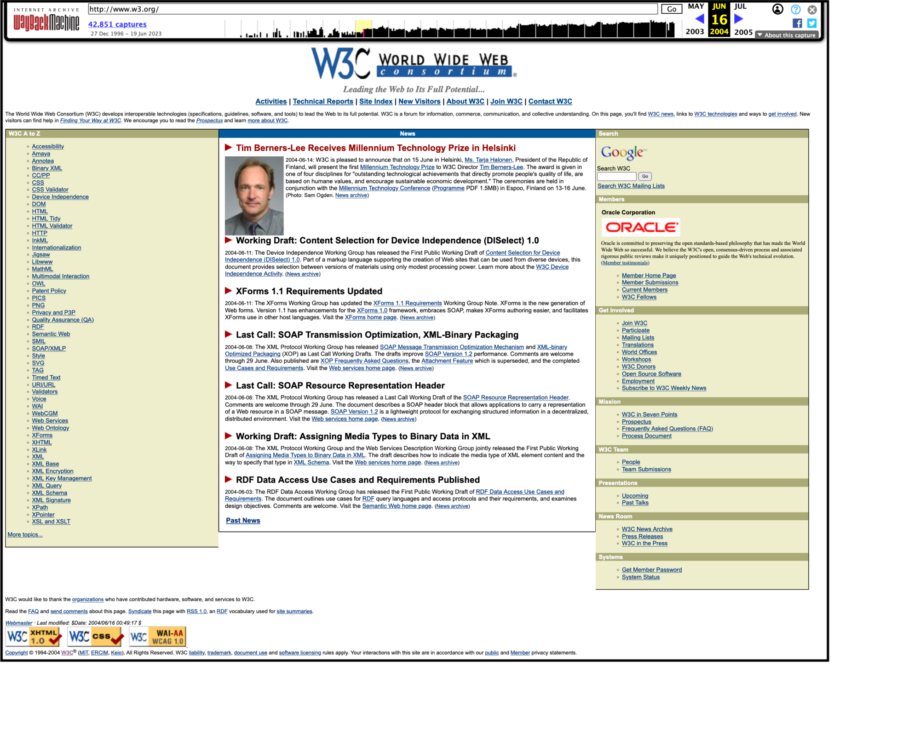
-
2004-10-09
In this revision, there is even more content added, notably by creating at the top left a section with a box to highlight specific information. It was event-based but the concept to use such boxes on the base remained for a few more years.
Browse this version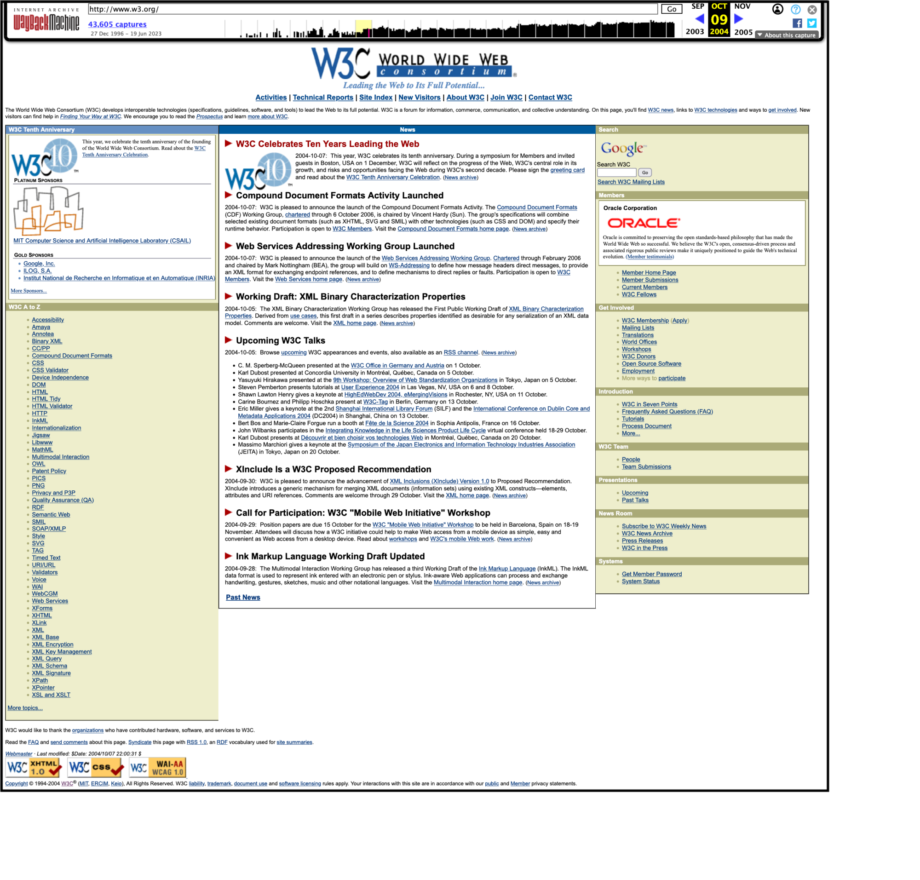
-
2005-03-17
The most notable change in this version was the addition to the bottom of the right-hand side column of the list of W3C Offices around the globe, thus putting emphasis on the global footprint of the World Wide Web Consortium.
Browse this version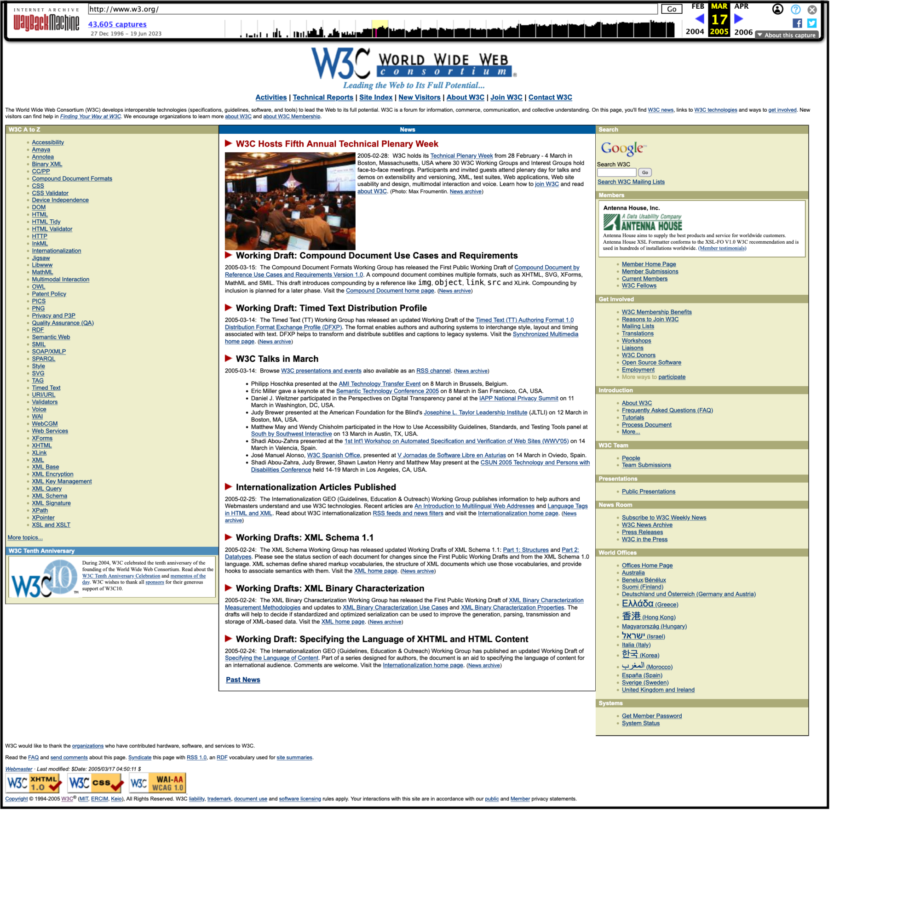
Fourth design (2009-2023)
The era of the fourth design was one of radical changes in how the homepage looked and how we managed the whole site content. It featured a more modern design, consistent navigation pattern across top pages, a different information architecture, new style for technical reports, and new content, including calendars and aggregated blogs. Many subsequent changes to this design were minor but major changes happened everywhere else on the site as the W3C Systems Team created essential tooling.
-
2009-10-15
That design was as striking compared to the previous two as those were to the original look. It was a sudden revolution whereas previous changes were more organic and gradual. The strength of this redesign resided in the re-usability of content in blocks throughout the site.
Browse this version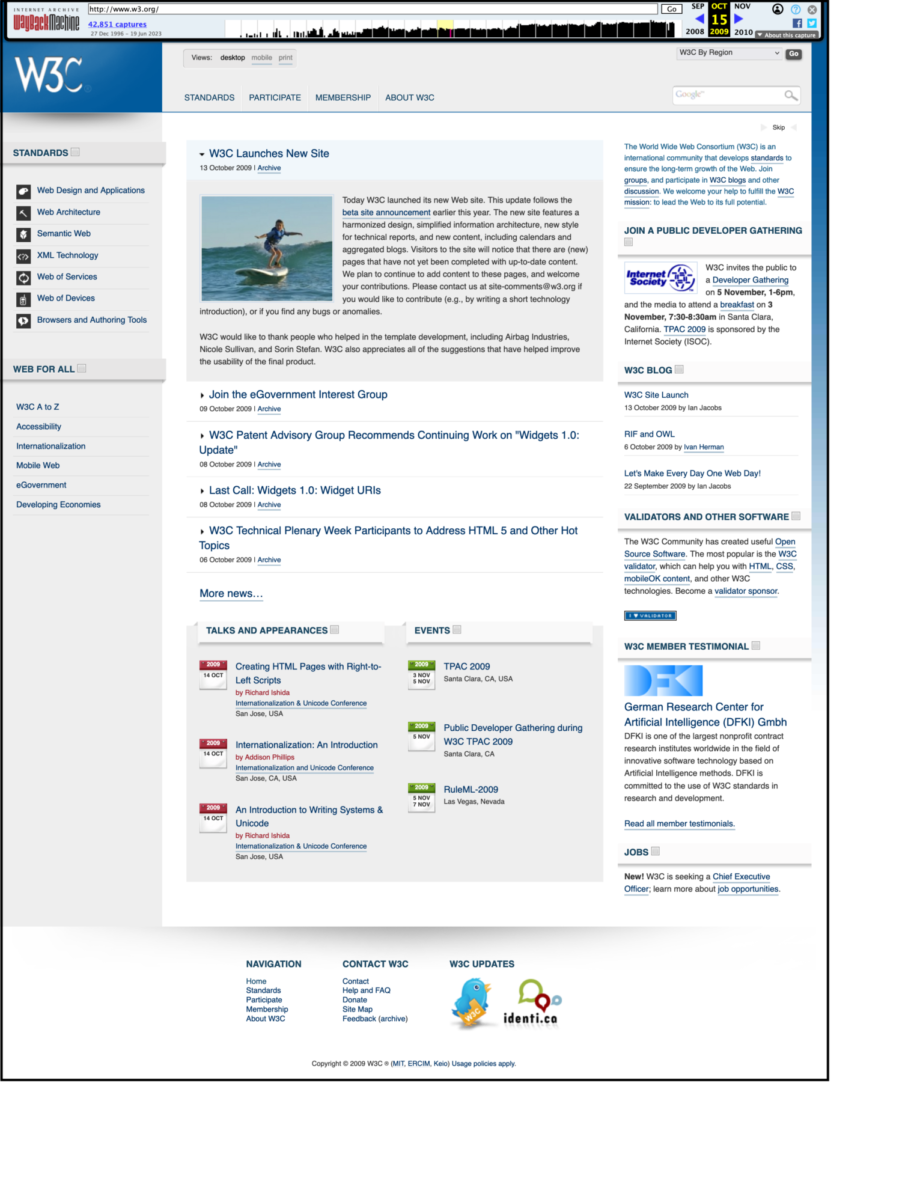
-
2010-01-20
In this update the most notable change related to the size of the text displayed on the home page, which was adjusted to be more balanced given the various spaces.
Browse this version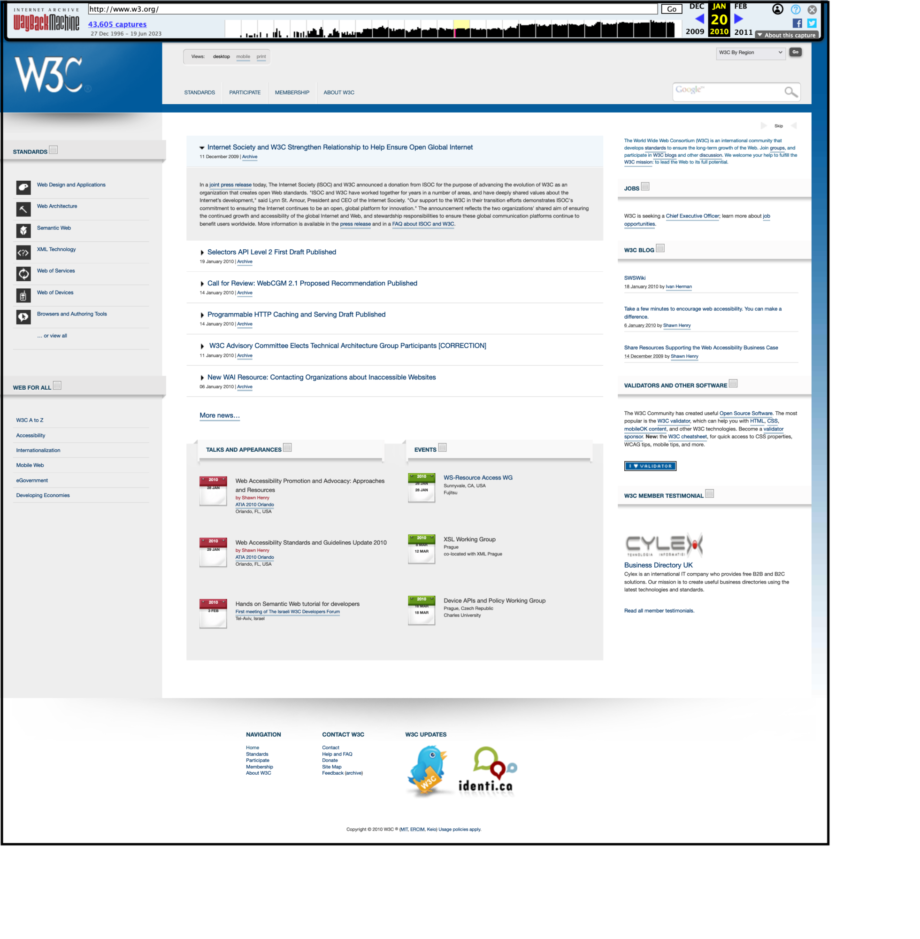
-
2020-01-14
This version removed the picker from the top-right corner to select the site of a W3C Office in one of 16 regions. A decade later, the homepage looks almost exactly the same. Icons were removed at the start of menus from the left-hand side column because those were bespoke and had not scaled. Once again, we notice that the content available on the homepage has gotten quite large, heralding a future re-design.
Browse this version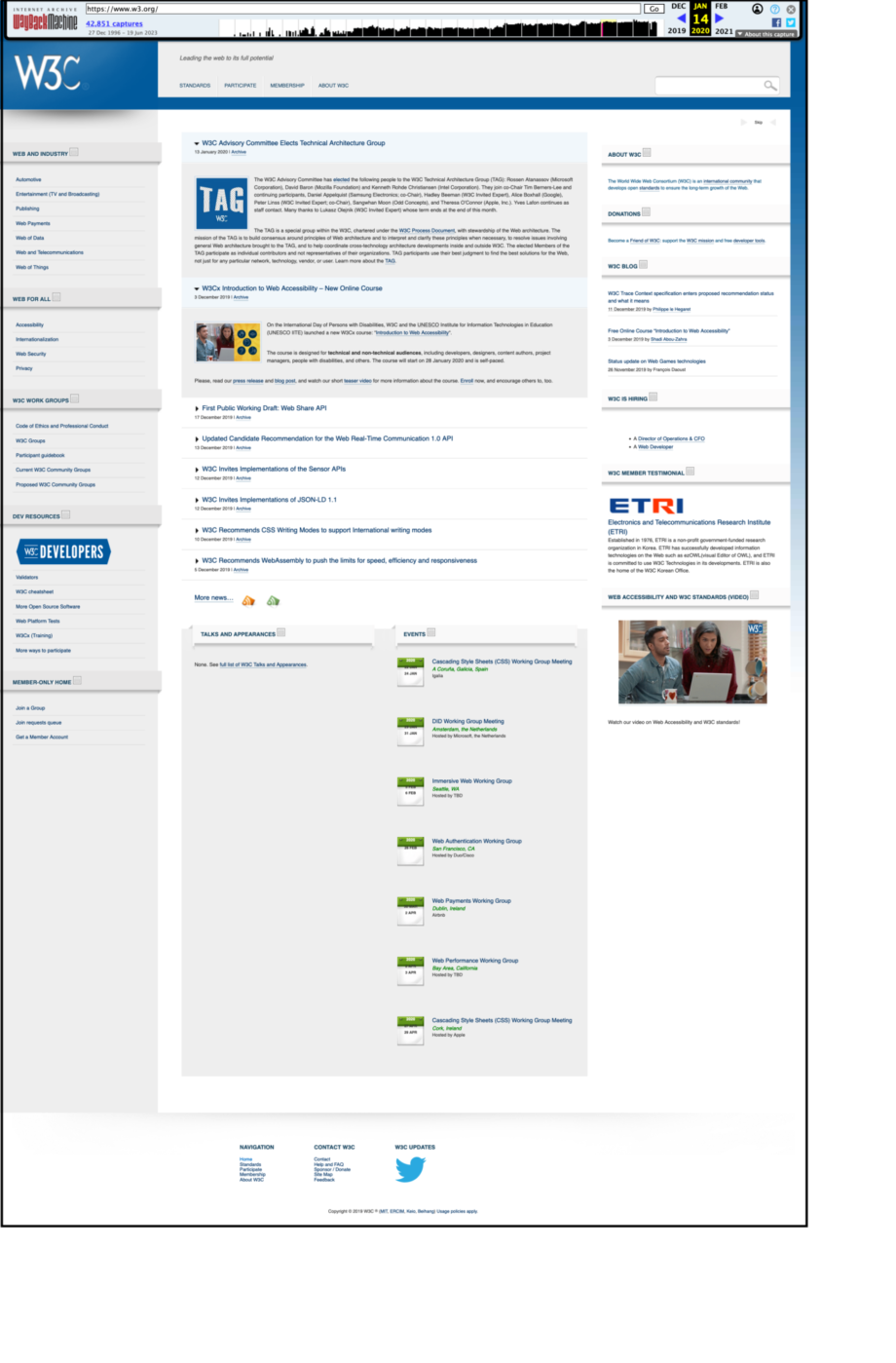
Please refer to the historic Website redesign (2008) to learn about this project's goals and features.
Fifth design (2023-current)
This design completely overhauled the front and back end of the site, the CMS and the entire information architecture. The design goals were to communicate more effectively what our organization does with a more modern, inclusive, usable website.
-
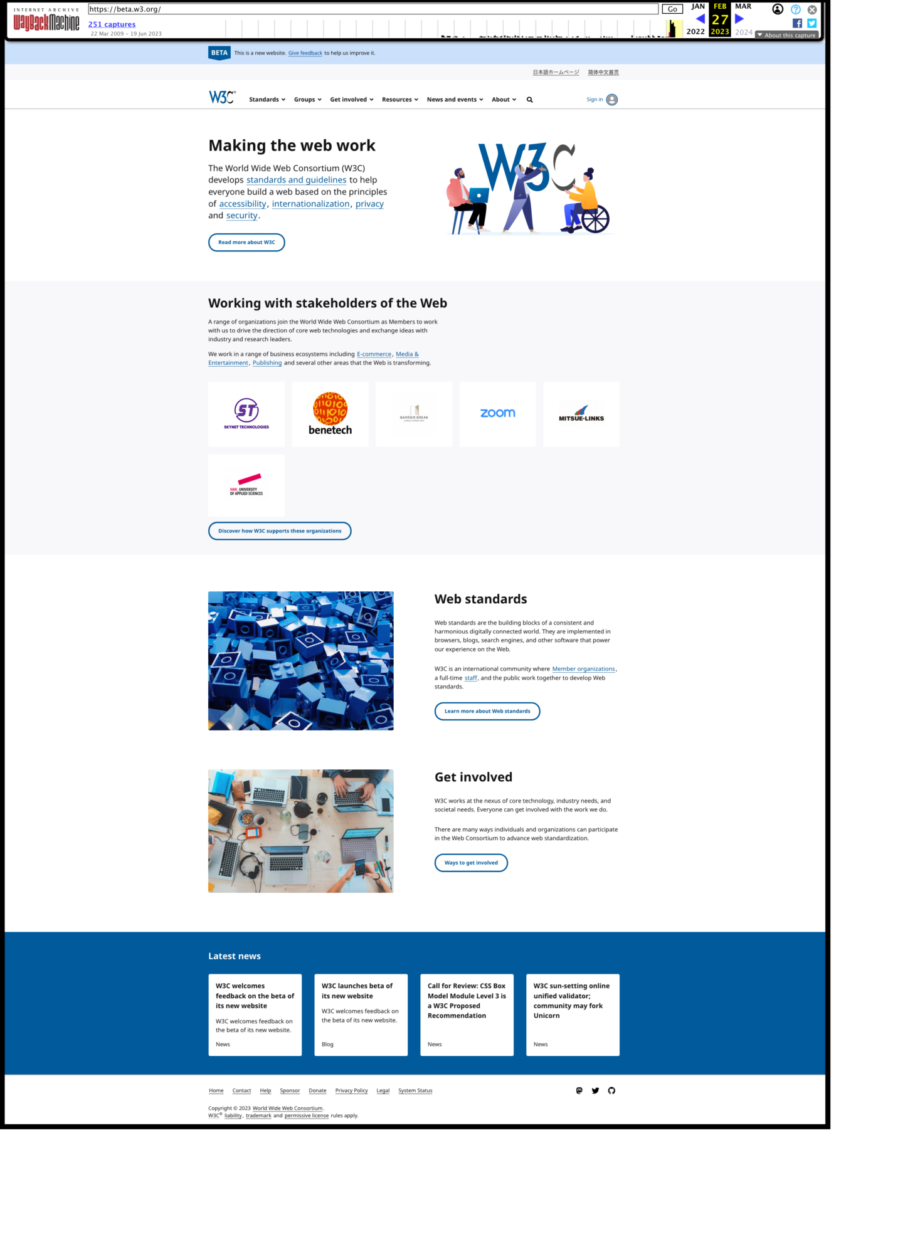
-
2023-06-20
This design achieves a cleaner and modern look and greater usability, better accessibility, as well as simplifying how the site is managed.
Browse this version